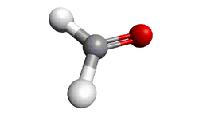|
The initial experimental frequencies have been reported
by
(1) R. Bocquet, J. Demaison, J. Cosléou, A. Friedrich,
L. Margulès, S. Macholl, H. Mäder, M. M. Beaky,
and G. Winnewisser,
1999, J. Mol. Spectrosc. 195, 345.
While most of the reported transition frequencies were
based on these new measurements, additional data were
taken from earlier work by
(2) D. Dangoisse, E. Willemot, and J. Bellet,
1978, J. Mol. Spectrosc. 71, 414;
by
(3) P. Glorieux and G. W. Hill,
1978, J. Mol. Spectrosc. 70, 459;
by
(4) K. D. Tucker, G. R. Tomasevich, and P. Thaddeus,
1971, Astrophys. J. 169, 429;
and by
(5) G. Winnewisser,
1977, J. Mol. Spectrosc. 64, 340.
The fairly extensive data set of the first entry from
Feb. 2000 was supplemented recently by an extensive set
of lines recorded betwenn 1.1 and 1.52 THz and
reported by
(6) O. Zakharenko, R. A. Motiyenko, L. Margulès,
and T. R. Huet,
2015, J. Mol. Spectrosc. 317, 41.
As in that work, transition frequencies with uncertainties
of 200 kHz or larger measured below 1000 GHz were omitted
as were the older transition frequencies in the range of the
new measurements. Most of the reported uncertainties were
estimated somewhat conservatively, but were not altered.
The uncertainties of the Köln measurements from (1)
were made smaller by a factor of 2.
The predictions of high-lying rotational levels have
improved somewhat. Overall, they should be sufficiently
accurate for all astronomical purposes. Predictions
with uncertainties larger than 0.3 MHz
should be viewed with caution.
Because of the lower symmetry of HDCO with respect to
the main isotopomer, spin-statistics do not have to be
considered !
The dipole moment has been measured by
(7) J. W. C. Johns and A. R. W. McKellar,
1977, J. Mol. Spectrosc. 64 327.
|
